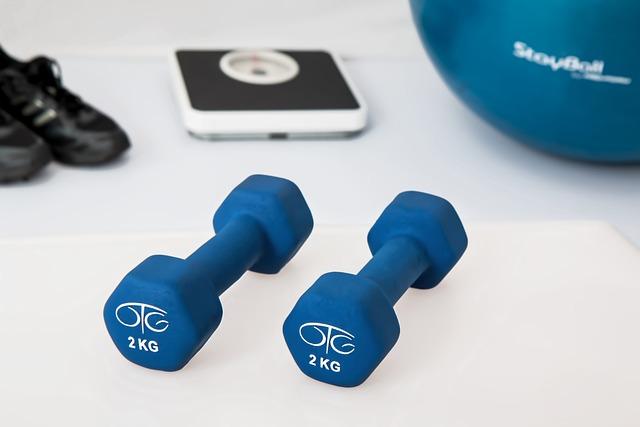Rear Delt Dumbbell Workouts: Define Your Rear Delts!

Are you ready to sculpt well-defined rear delts that pack a powerful punch? Look no further! In this article, we will delve into the world of rear delt dumbbell workouts, guiding you through exercises that will unleash the full potential of your posterior deltoids. Say goodbye to weak back muscles and hello to a well-rounded, chiseled physique. Get ready to take your upper body strength and aesthetics to new heights. Let’s define those rear delts and make your workouts count!
Contents
- 1. Sculpt and Strengthen: Unlock the Power of Rear Delt Dumbbell Exercises
- 2. Anatomy 101: Understanding the Importance of Developing Rear Delts
- 3. Step-by-Step Guide: Mastering Proper Form for Rear Delt Dumbbell Workouts
- 4. Targeted Variations: Explore Different Exercises for Optimal Rear Delt Development
- 5. Power of Progressive Overload: How to Continuously Challenge Your Rear Delts
- Exercise | Sets | Reps
- 6. Dumbbell vs. Cable: Choosing the Right Equipment for Rear Delt Workouts
- 7. Incorporating Super Sets: Enhance Intensity and Maximize Results for Rear Delts
- 8. Avoiding Common Mistakes: Tips to Ensure Effective Rear Delt Training
- 9. Balancing Your Routine: Integrating Rear Delt Workouts into a Full-Body Program
- 10. Taking it to the Next Level: Advanced Rear Delt Strategies to Achieve Definition and Strength
1. Sculpt and Strengthen: Unlock the Power of Rear Delt Dumbbell Exercises
Rear delt dumbbell exercises are a great way to sculpt and strengthen your rear delts. By targeting this specific muscle group, you can achieve a defined and toned appearance that enhances your overall physique. Incorporating these exercises into your regular workout routine can help you unlock the power of your rear delts and maximize your results.
Here are some effective rear delt dumbbell exercises that you can try:
-
Bent-Over Dumbbell Raise: Stand with your feet shoulder-width apart and knees slightly bent. Hold a dumbbell in each hand, palms facing your body. Bend forward at the waist, keeping your back straight. Raise your arms out to the sides, squeezing your shoulder blades together. Lower the dumbbells back down and repeat.
-
Seated Rear Delt Fly: Sit on a bench with your feet flat on the floor and a dumbbell in each hand. Lean forward, keeping your back straight and chest lifted. Extend your arms in front of you, palms facing each other. Open your arms out to the sides, squeezing your shoulder blades together. Slowly return to the starting position and repeat.
- Standing Reverse Fly: Stand with your feet hip-width apart, knees slightly bent, and a dumbbell in each hand. Hinge forward at the hips, keeping your back flat and core engaged. Extend your arms straight down, palms facing each other. Lift your arms out to the sides, squeezing your shoulder blades together. Lower the dumbbells back down and repeat.
Remember to start with a weight that challenges you but allows you to maintain proper form. Gradually increase the weight as your strength improves. Aim for 3 sets of 10-12 repetitions for each exercise. Don’t forget to warm up before starting and stretch afterwards to prevent injury and aid in recovery.
Incorporating these rear delt dumbbell exercises into your workout routine will help you define your rear delts and achieve a well-rounded physique. So grab those dumbbells and get ready to sculpt and strengthen your way to the rear delt results you desire!
2. Anatomy 101: Understanding the Importance of Developing Rear Delts
The rear delts, or posterior deltoids, are a crucial part of your shoulder muscles. Often overlooked, these muscles play a significant role in shoulder stability, posture, and overall upper body strength. Developing your rear delts can help prevent injuries, improve upper body strength, and enhance your physique. In this post, we will dive into the anatomy of the rear delts and discuss why it is essential to focus on their development.
The rear deltoids are located at the back of your shoulders, connecting your upper arm bone to your shoulder blade. When properly developed, they contribute to a balanced and well-rounded look. Neglecting your rear delts can lead to muscle imbalances, which can affect your posture and increase the risk of shoulder injuries. By incorporating targeted exercises into your workout routine, you can define and strengthen your rear delts, improving both your performance and appearance.
So, why should you prioritize developing your rear delts? Here are a few key reasons:
-
Muscle balance: Building well-rounded shoulder muscles will not only enhance your physique but also prevent muscle imbalances. Neglecting the rear delts can lead to an overemphasis on the front and side delts, which can result in poor posture and increase the risk of shoulder instability.
-
Shoulder stability: Strong rear delts contribute to better shoulder stability, reducing the risk of shoulder injuries. When your rear delts are weak, it can lead to shoulder joint instability and impingement, limiting your range of motion and overall shoulder function.
- Upper body strength: Developing your rear delts can improve your overall upper body strength. Strong rear delts are crucial for exercises like rows, pull-ups, and overhead presses. By incorporating rear delt exercises into your routine, you can enhance your performance in these movements and increase your overall strength.
Now that you understand the importance of developing your rear delts, it’s time to focus on specific exercises and workouts that target this muscle group. Stay tuned for our next post, where we will share some effective dumbbell workouts to define and strengthen your rear delts. Be prepared to challenge yourself and take your shoulder development to the next level!
3. Step-by-Step Guide: Mastering Proper Form for Rear Delt Dumbbell Workouts
A well-defined rear deltoid not only adds symmetry to your physique but also improves your posture and enhances shoulder stability. However, it can be challenging to target this muscle group effectively. In this step-by-step guide, we will walk you through the proper form for rear delt dumbbell workouts to help you maximize your results.
1. Select the appropriate dumbbell weight: Start with a weight that challenges your rear delts without compromising form. It’s better to start lighter and gradually increase the weight as you gain strength.
2. Stand tall and engage your core: Begin by standing with your feet shoulder-width apart, maintaining a strong and stable stance. Engage your core by pulling your belly button in towards your spine.
3. Grip the dumbbells and bring them to shoulder height: Hold a dumbbell in each hand and keep your palms facing your body. Lift the dumbbells to shoulder height, making sure that your elbows are slightly bent.
4. Exhale and raise your arms laterally: Slowly exhale as you raise the dumbbells out to the side, keeping a slight bend in your elbows. Focus on squeezing your rear delts at the top of the movement.
5. Lower the dumbbells with control: Inhale as you bring the dumbbells back to the starting position, maintaining control throughout the movement. Avoid swinging your arms or arching your back.
6. Repeat for desired reps and sets: Aim for 10-15 reps per set and complete 2-3 sets with proper form. Rest for 60-90 seconds between sets to allow your muscles to recover.
By following these step-by-step instructions for proper form, you can ensure that you are effectively working your rear delts during dumbbell workouts. Remember to listen to your body and choose the weight that challenges you without sacrificing technique. With consistent and proper training, you’ll soon see the definition and strength in your rear delts.
4. Targeted Variations: Explore Different Exercises for Optimal Rear Delt Development
The rear deltoid muscles, also known as the rear delts, are an often neglected muscle group that play a crucial role in overall shoulder strength and stability. To effectively target and develop your rear delts, it’s important to incorporate a variety of exercises into your training routine. In this post, we’ll explore different dumbbell workouts that specifically target the rear delts, helping you define and strengthen this important muscle group.
-
Bent-Over Dumbbell Raises: This exercise primarily targets the rear delts while also engaging the upper back muscles. To perform this exercise, stand with your feet shoulder-width apart and hold a dumbbell in each hand. Bend forward at the waist, keeping your back straight and your core engaged. With a slight bend in your elbows, raise the dumbbells out to the sides until your arms are parallel to the floor. Pause briefly at the top, then lower the dumbbells back down to starting position. Repeat for a desired number of repetitions.
-
Reverse Flyes: This exercise isolates the rear delts and helps improve posture. Start by sitting on a bench or chair with your feet flat on the floor. Hold a dumbbell in each hand and extend your arms straight out in front of you, palms facing each other. Keeping a slight bend in your elbows, open your arms out to the sides, squeezing your shoulder blades together as you do so. Pause at the top, then slowly return to the starting position.
- Incline Dumbbell Rows: This exercise targets not only the rear delts, but also the upper back muscles. Set an incline bench to around a 45-degree angle. Hold a dumbbell in each hand, sit on the bench with your chest pressed against the incline, and let your arms hang straight down. Without lifting your chest off the bench, row the dumbbells up towards your sides, squeezing your shoulder blades together at the top of the movement. Lower the dumbbells back down and repeat for the desired number of repetitions.
By incorporating these targeted variations into your rear delt workouts, you’ll be able to fully activate and develop your rear delts. Remember to start with lighter weights and gradually increase the resistance as your strength improves. Be sure to maintain proper form to avoid injury and always listen to your body. With consistency and dedication, you’ll be well on your way to defining and strengthening your rear delts!
5. Power of Progressive Overload: How to Continuously Challenge Your Rear Delts
The key to developing strong and defined rear delts lies in the power of progressive overload. By continuously challenging this muscle group with effective dumbbell workouts, you can achieve the impressive development you desire.
Progressive overload is the gradual increase in stimulus placed on a muscle group, which forces it to adapt and become stronger. To apply this principle to your rear delts, you need to consistently increase the weight, reps, or sets in your dumbbell workouts. Here are some strategies to help you continuously challenge and stimulate your rear delts:
-
Increase the weight: Start with a moderate weight that allows you to perform the exercises correctly with good form. As you progress, gradually increase the weight to provide a greater stimulus to your rear delts.
-
Add reps or sets: Instead of increasing the weight, you can also increase the number of repetitions or sets in your workout. This will help to create more tension and fatigue in your rear delts, promoting muscle growth.
- Vary your exercises: Incorporate a variety of dumbbell exercises that target your rear delts from different angles. This will ensure that you’re effectively challenging all areas of your rear delts and stimulating muscle growth.
Here’s an example of a progressive overload workout for your rear delts:
Exercise | Sets | Reps
Bent-Over Rows | 3 | 10-12
Reverse Flys | 3 | 12-15
Seated Dumbbell Press | 3 | 8-10
Remember to always prioritize proper form and technique over heavy weights. Gradually progress with your weights and repetitions to challenge your rear delts and achieve the defined look you desire.
6. Dumbbell vs. Cable: Choosing the Right Equipment for Rear Delt Workouts
Dumbbell and cable exercises are both great options for targeting the rear deltoid muscles, but choosing the right equipment for your rear delt workouts can make a big difference in the results you achieve.
Dumbbell exercises for the rear delts are known for their versatility and ability to isolate the muscles effectively. The free range of motion allows for a greater stretch and contraction, activating more muscle fibers in the process. Additionally, dumbbell exercises often require more stabilization, leading to increased overall muscle engagement. Some popular dumbbell exercises for rear delts include bent-over lateral raises, reverse flyes, and rear delt rows.
On the other hand, cable exercises offer a constant tension throughout the range of motion, which can be beneficial for muscle growth and development. The continuous tension provided by the cables allows for a sustained contraction of the rear deltoids, making it an excellent choice for hypertrophy training. Cable exercises like cable lateral raises, face pulls, and cable rows can effectively target the rear delts while minimizing stress on other muscles, offering a more focused workout.
When it comes to choosing between dumbbell and cable exercises for your rear delts, it ultimately depends on your goals and preferences. If you’re looking for variety and overall muscle engagement, dumbbells may be the way to go. On the other hand, if you’re aiming for focused muscle growth and love the feeling of constant tension, cables might be your best bet. And of course, there’s always the option to incorporate both into your training routine to reap the benefits of each equipment. Experiment with different exercises and find what works best for you!
7. Incorporating Super Sets: Enhance Intensity and Maximize Results for Rear Delts
Super sets can be a game changer when it comes to maximizing results for your rear delts. By incorporating this technique into your dumbbell workouts, you can enhance the intensity of your training and target your rear delts in a whole new way.
One effective super set for rear delts is the alternating dumbbell rear delt fly and dumbbell bent-over reverse fly. To perform this super set, start with a lighter pair of dumbbells and stand with your feet hip-width apart. With a slight bend in your knees, hinge forward at the hips, keeping your back straight and core engaged.
Begin the super set by performing the alternating dumbbell rear delt fly. Hold a dumbbell in each hand, palms facing in. Lift one arm out to the side, squeezing your rear delt at the top of the movement, then slowly lower it back down. Repeat with the other arm. Perform 10-12 repetitions on each side.
After completing the alternating dumbbell rear delt fly, immediately move into the dumbbell bent-over reverse fly. This time, hold the dumbbells with your palms facing down. Keeping your back straight, lift both arms out to the side, squeezing your rear delts at the top, then slowly lower them back down. Aim for 10-12 repetitions.
By incorporating super sets into your rear delt dumbbell workouts, you’ll be able to define and strengthen your rear delts more effectively. Remember to choose weights that challenge you but still allow for proper form throughout each exercise. So, give this super set a try and start seeing those rear delt gains!
8. Avoiding Common Mistakes: Tips to Ensure Effective Rear Delt Training
When it comes to effective rear delt training, it’s crucial to avoid common mistakes that can hinder your progress. By following these tips, you can ensure that your rear delt workouts are effective and help you define those important muscles.
-
Focus on proper form: One of the biggest mistakes people make during rear delt training is using improper form. Make sure to maintain a neutral spine, engage your core, and keep your shoulders down and relaxed. This will ensure that you are targeting the rear delts properly and minimizing the risk of injury.
-
Incorporate a variety of exercises: To really target and define your rear delts, it’s important to vary your exercises. Dumbbell workouts are great for rear delt training and can be incorporated into your routine. Try exercises like bent-over dumbbell raises, reverse flyes, and seated rear delt raises to target the muscles from different angles.
- Gradually increase weights and reps: As with any training, progression is key. Start with lighter weights and focus on mastering your form, then gradually increase the weight and number of reps as you get stronger. This will ensure that you continue to challenge your rear delts and see progress over time.
Remember, consistency is key when it comes to effective rear delt training. By avoiding common mistakes and following these tips, you can define and strengthen your rear delts for a well-rounded physique.
9. Balancing Your Routine: Integrating Rear Delt Workouts into a Full-Body Program
In order to achieve a well-rounded and balanced physique, it is important to not neglect any muscle group, including the often overlooked rear delts. These muscles, located at the back of your shoulders, not only help to stabilize your shoulder joints but also contribute to a wider, more defined upper back and a proportional physique.
Integrating rear delt workouts into your full-body program doesn’t have to be complicated or time-consuming. One effective exercise that targets these muscles is the dumbbell rear delt fly. To perform this exercise, start by holding a dumbbell in each hand, with your palms facing inwards. Bend at the waist, keeping your back straight and your knees slightly bent. Gently raise your arms out to the side, maintaining a slight bend at your elbows, until they are parallel to the floor. Squeeze your rear delts at the top of the movement before slowly returning to the starting position. Aim for 3 sets of 10-12 repetitions with a weight that challenges you but allows for proper form.
To further enhance your rear delt development, consider incorporating other exercises such as bent-over dumbbell rows, face pulls, and reverse flyes into your routine. These exercises target multiple muscle groups including the rear delts, allowing for a more comprehensive training session. It is important to progressively increase the weight and intensity over time to ensure continuous progression and development.
Remember to always prioritize proper form and technique in your workouts to prevent injuries. Take the time to warm up your muscles properly and listen to your body. With consistent effort and the inclusion of rear delt workouts in your full-body program, you’ll soon notice improvements in strength and definition in this often-neglected muscle group. So, don’t forget to define your rear delts and balance your routine for a sculpted and proportionate physique!
10. Taking it to the Next Level: Advanced Rear Delt Strategies to Achieve Definition and Strength
When it comes to achieving well-defined and strong rear delts, it’s time to take your workouts to the next level. These advanced strategies will target your rear delts in a way that will leave you feeling the burn and seeing the results.
1. Resistance Band Pull-Aparts: Start by standing with your feet shoulder-width apart and holding a resistance band in front of you with your palms facing downwards. Keep your arms straight and pull the band towards your body, squeezing your rear delts. Slowly release the tension and repeat for 3 sets of 12-15 reps.
2. Bent-Over Dumbbell Rows: Grab a pair of dumbbells and hinge at the hips, bending your knees slightly. Lean forward until your upper body is parallel to the ground, and let your arms hang down with your palms facing each other. Engage your rear delts as you pull the dumbbells towards your chest, squeezing your shoulder blades together. Slowly lower the weights and repeat for 3 sets of 10-12 reps.
3. Arnold Press: Sit on a bench with a pair of dumbbells held at shoulder height, palms facing your body. As you press the dumbbells overhead, rotate your wrists so that your palms are facing forwards at the top of the movement. Lower the dumbbells back down, rotating your wrists back to the starting position. This exercise not only targets your rear delts but also engages your shoulders and upper arms. Aim for 3 sets of 8-10 reps.
| Exercise | Sets | Reps |
|---|---|---|
| Resistance Band Pull-Aparts | 3 | 12-15 |
| Bent-Over Dumbbell Rows | 3 | 10-12 |
| Arnold Press | 3 | 8-10 |
Remember to always maintain proper form and engage your muscles throughout the exercises. As you progress and become more comfortable with these advanced strategies, consider increasing the weight or intensity to continue challenging your rear delts. With consistency and dedication, you’ll be well on your way to defining and strengthening those rear delts!
In conclusion, incorporating rear delt dumbbell workouts into your routine is a game-changer when it comes to defining those oft-neglected rear delts. By targeting these muscles with precision and intensity, you can enhance your upper body symmetry and achieve a well-rounded physique. Whether you’re a seasoned fitness enthusiast or just starting your journey, the exercises we’ve covered today provide an excellent starting point. Remember to maintain proper form, challenge yourself with progressive overload, and give your rear delts the attention they deserve. So, grab those dumbbells, ignite your determination, and get ready to unlock the true potential of your rear delts. Your well-defined shoulders are just a workout away!














